The concept of xeriscaping is nothing new. People in drier parts of the world have always taken inventive steps to stretch their resources, through water storage, crop selection, structural design, and other means to create landscapes. The incentives in modern times are hardly different, but the scale of our consumption has certainly changed. We expect limitless resources at low prices, with little investment in adapting to our regional climates. But here’s the simple reality: our “limitless” resources are not in fact limitless, our low prices are rising, and our climate is not going to adapt to us. The Southwest encompasses diverse areas like Oceanside, Barstow, Santa Fe, and Austin, but one thread links them all: dry times will come, especially as our climate changes.
Learn more: 8 Inspired Drought-Tolerant Plant Combinations for a Water-Wise Landscape
When the term “xeriscape” was coined in Denver, Colorado, in the mid-1970s, it was severe drought that got people’s attention. Denver, like many semi-arid western cities, was modeled on more lush eastern aesthetics. Turning down the tap was unthinkable, even though emerald lawns and thirsty trees bore no resemblance to Denver’s natural mountain and high prairie landscapes. For some, the pendulum swung too far, and a good concept devolved into the slanderous term “zero-scaping,” with wastelands of hot gravel and tattered yuccas sweeping through industrial parks and strip malls, and more than a few front yards.
We’ve come a long way since then, and there’s no excuse for adopting that style now. More sustainable—and attractive—versions of xeriscape have gone global. With so many choice plants and smart innovations available, we can create our own beautiful, sustainable bits of paradise and still feel like responsible global citizens!
So why would someone want to xeriscape in their home garden, and what does that even mean these days? Isn’t that just for people that live in the desert? Wherever you live, if you strive for a sustainable balance between your local natural landscapes and the landscape that welcomes you home each day, there are immediate and far-reaching benefits. Water savings is just one advantage.
Here are some tips that can guide you into xeriscaping, no matter where you live.
- Find inspiration: Go out and immerse yourself in local natural areas. Get to know the plants that you like best and notice which ones are visited by hummingbirds and other pollinators, or what plants provide food or shelter for wildlife. If your yard faces south or east, explore southern or eastern exposures. What is the balance of grasses, shrubs, and wildflowers in sun and shade, and how does it compare to your conditions?
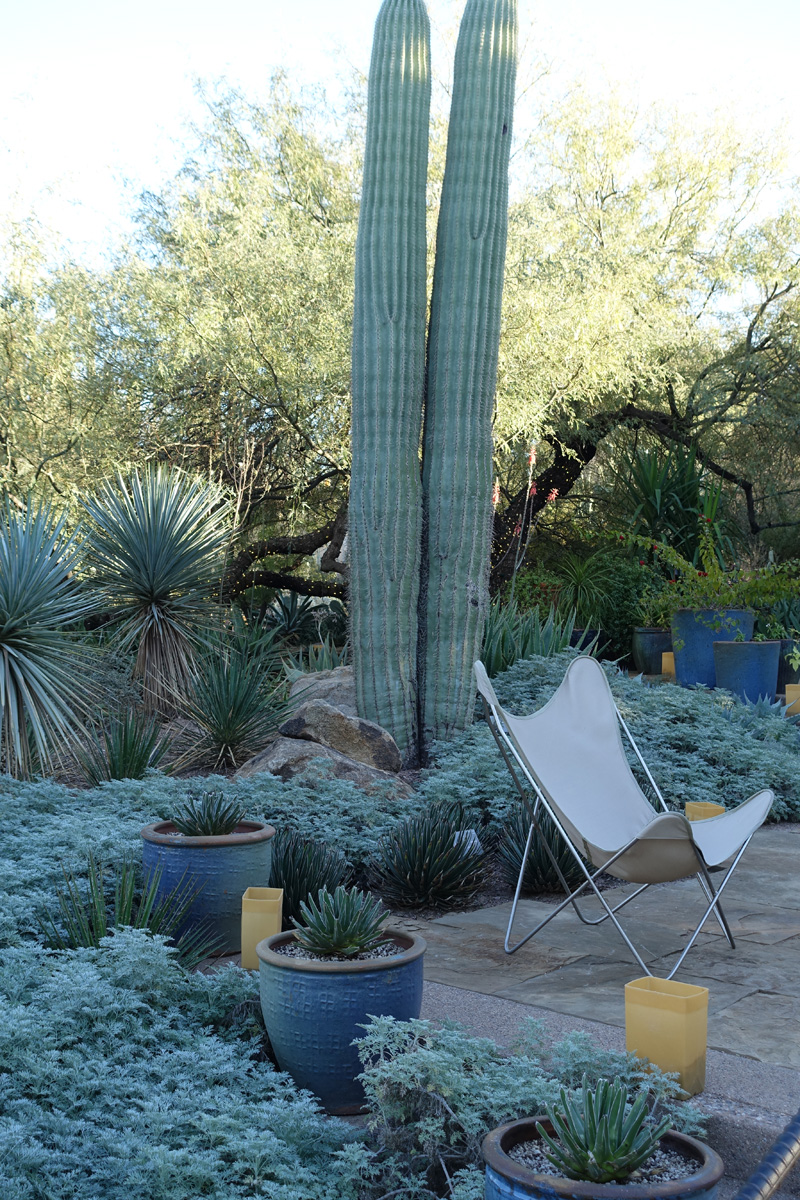
- Visit nearby resources: Many of the best public gardens in the West are built on core values of sustainability and diversity, and people flock to them by the millions to get insights. These are not your grandmother’s xeriscapes! Take photos, write down plant names, and talk to staff. Lots of local garden groups host tours of well-done sustainable landscapes. Many communities or botanic gardens offer classes, plant sales, or other resources to get you started down the sustainable xeriscape path. Find local nurseries that have knowledgeable staff and a good selection of native and adapted plants for your region.
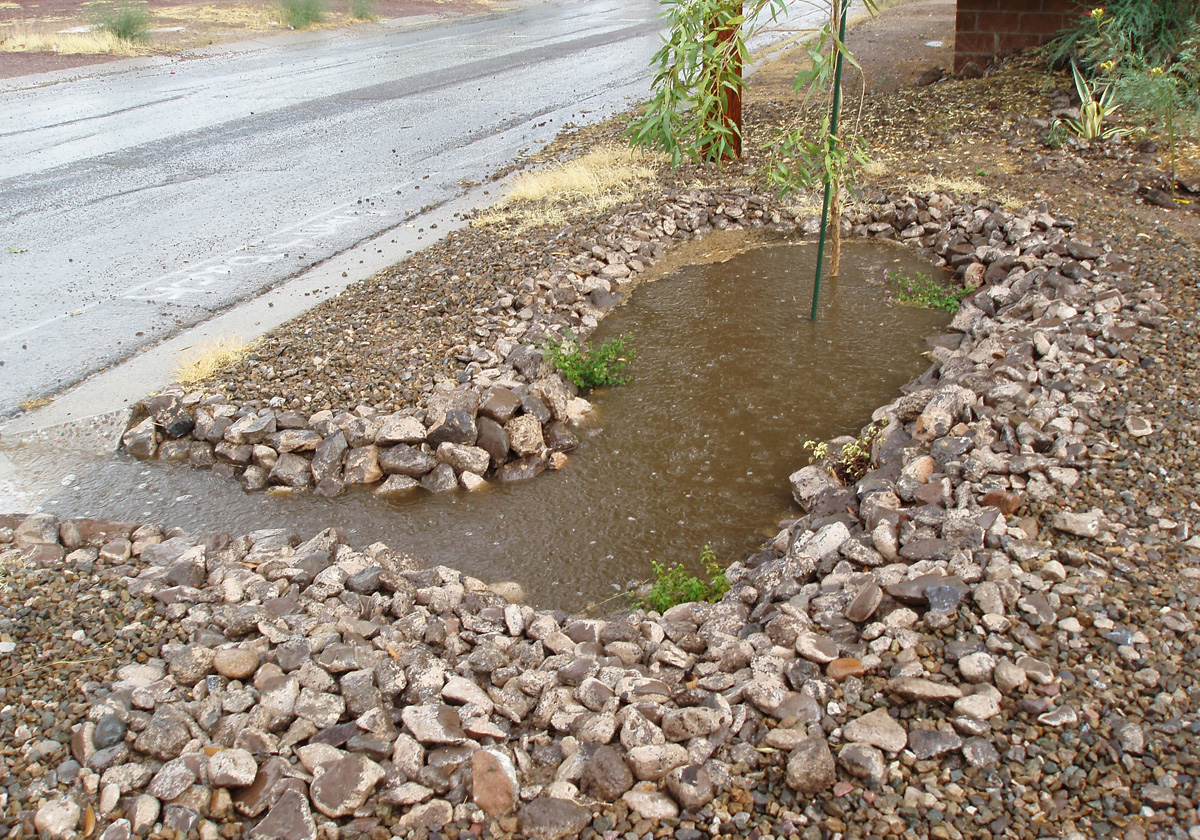
- Check local policies: Some cities like Tucson, Arizona, offer residents reasonably priced trees for planting to help create shade and reduce the heat island effect. They will even help you do a curb cut to capture street runoff and direct it to plants in your yard, reducing loss of stormwater and creating shadier streets. If your city hasn’t done this yet, explore the idea with your local civic organizations. Other incentives like rebates often exist to help support more sustainable landscapes.
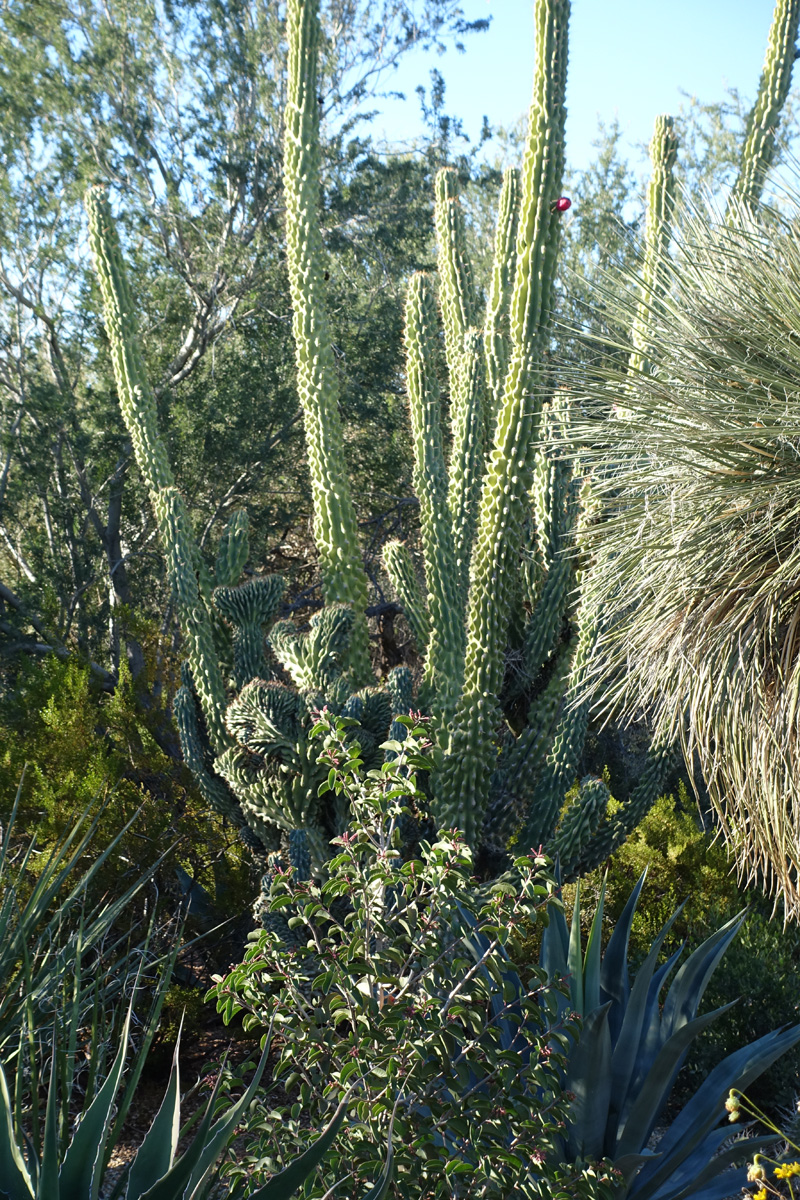
- Make planting plans: Use native plants that are already perfectly adapted to your area for at least part of your landscape. Even in the desert, a backdrop of tough local plants just “feels right,” and makes good habitat available for pollinators and other species, especially in the far reaches of your garden that may be harder to work in. In most cases, soil prep can be minimal, and once established, natives and well-adapted plants will survive with minimal supplemental water and care.
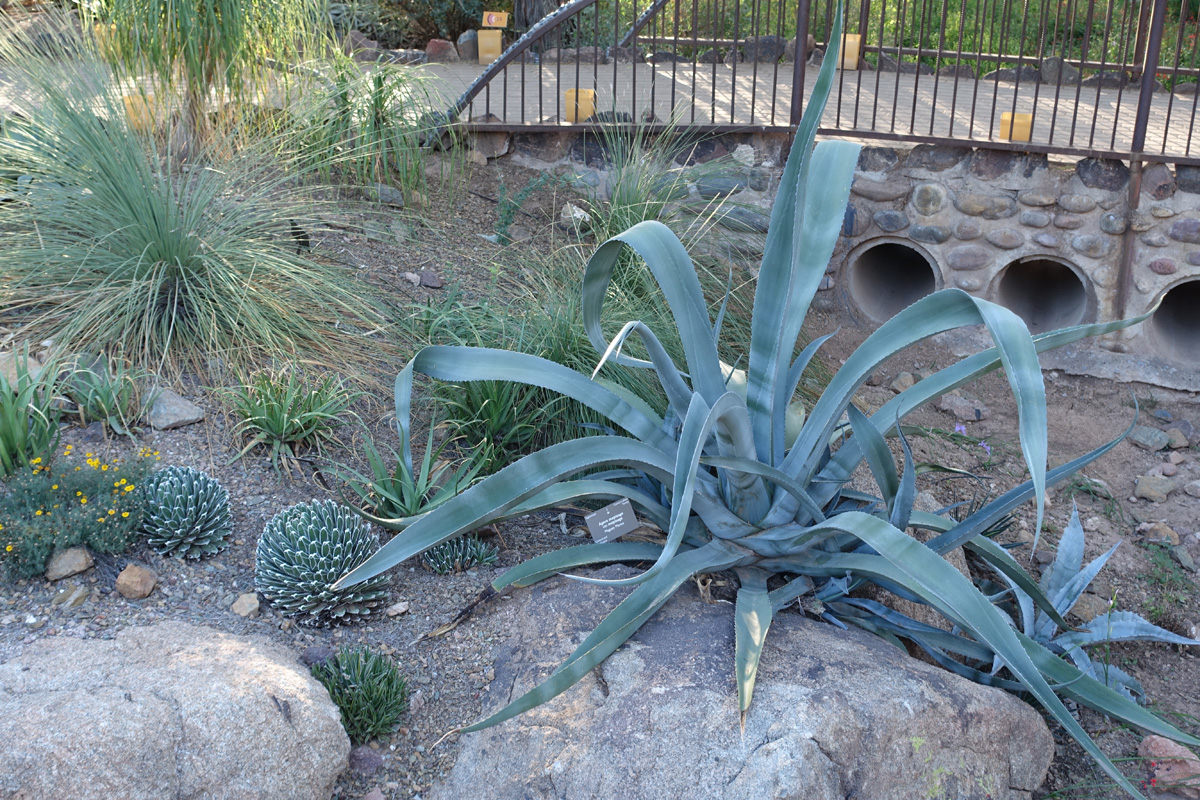
- Maximize existing opportunities: If your roof has downspouts, place thirstier plants where the water collects so they can take full advantage of the occasional deep soaking when it rains. If your garden slopes toward the street, contour it with some creative collection basins or dry streambeds to catch all that runoff before it goes down the street gutters. Even brief storms can result in several inches of water in catchment areas, soaking deep into the root zone of your plants.
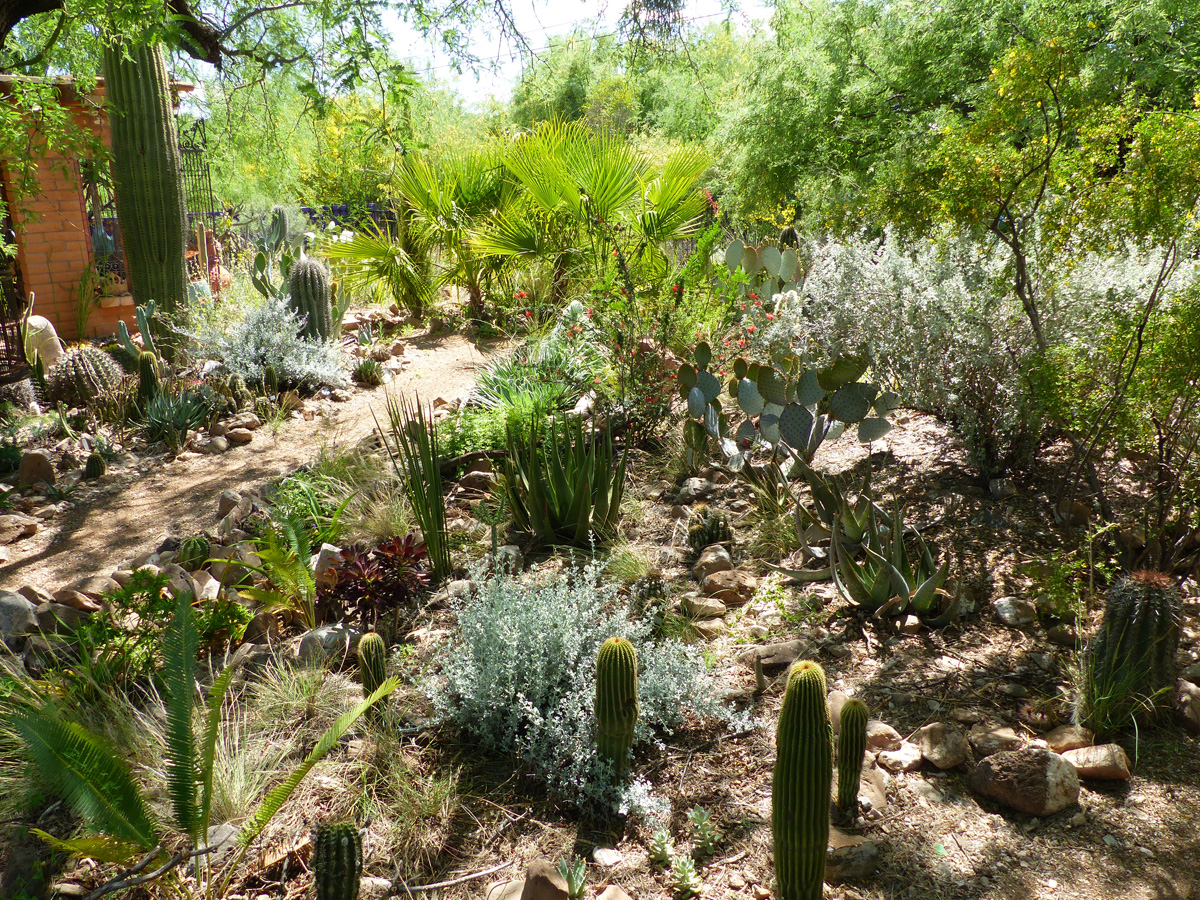
- Practice thoughtful moderation: Once you’ve taken some steps towards planning and planting a sustainable xeric landscape, you may find that your site and resources will still allow you, with a clear conscience, to include a few thirstier plants like that crepe myrtle (Lagerstroemia spp. and cvs., Zones 6–10) you’ve been admiring, or that fragrant citrus tree. As they say, all things in moderation. Group these plants with similar needs together whenever possible into the areas that you know have more available water, like those catchment contours you created near your downspouts.
It is still easy to think that our water woes will be solved by someone else. Think about this: every time you use water, whether you live in the high mountains, low desert, or a well-watered valley, that water was on its way downstream to another meadow of wildflowers, another lush canyon, another lake, and most likely another homeowner. The water resources we all rely on belong to all life on earth, and then to the rest of us. Everyone helping helps everyone!
Discuss this and any other gardening topic in our Southwest gardening forum.
Find more information on Southwest gardening here.
Dan Johnson lives and gardens in Denver, Colorado, and in Tucson, Arizona. He is an associate director of horticulture for the Denver Botanic Gardens.
Photos, except where noted: Dan Johnson
Fine Gardening Recommended Products

Corona® Multi-Purpose Metal Mini Garden Shovel
Fine Gardening receives a commission for items purchased through links on this site, including Amazon Associates and other affiliate advertising programs.
Longer Service Life: The blade of this round small shovel is made of carbon steel, which can effectively improve the hardness by high temperature quenching, and the surface has anti-rust coating to avoid rusting. In the process of use when encountering hard objects will not bend and deformation.
Sturdy Structure: The small garden shovel with D-handle, ergonomically designed grip can increase the grip of the hand when using, the handle is made of strong fiberglass, will not bend and break under heavy pressure. Quick Digging: Well-made digging shovel has a sharp blade, and the round shovel head is designed to easily penetrate the soil and cut quickly while digging to enhance your work efficiency.

Attracting Beneficial Bugs to Your Garden, Revised and Updated Second Edition: A Natural Approach to Pest Control
Fine Gardening receives a commission for items purchased through links on this site, including Amazon Associates and other affiliate advertising programs.
This revised and updated edition of Jessica Walliser’s award-winning Attracting Beneficial Bugs to Your Garden offers a valuable and science-backed plan for bringing balance back to the garden. With this indispensable gardening reference—now updated with new research, insights, and voices—learn how to create a healthy, balanced, and diverse garden capable of supporting a hard-working crew of beneficial pest-eating insects and eliminate the need for synthetic chemical pesticides.

